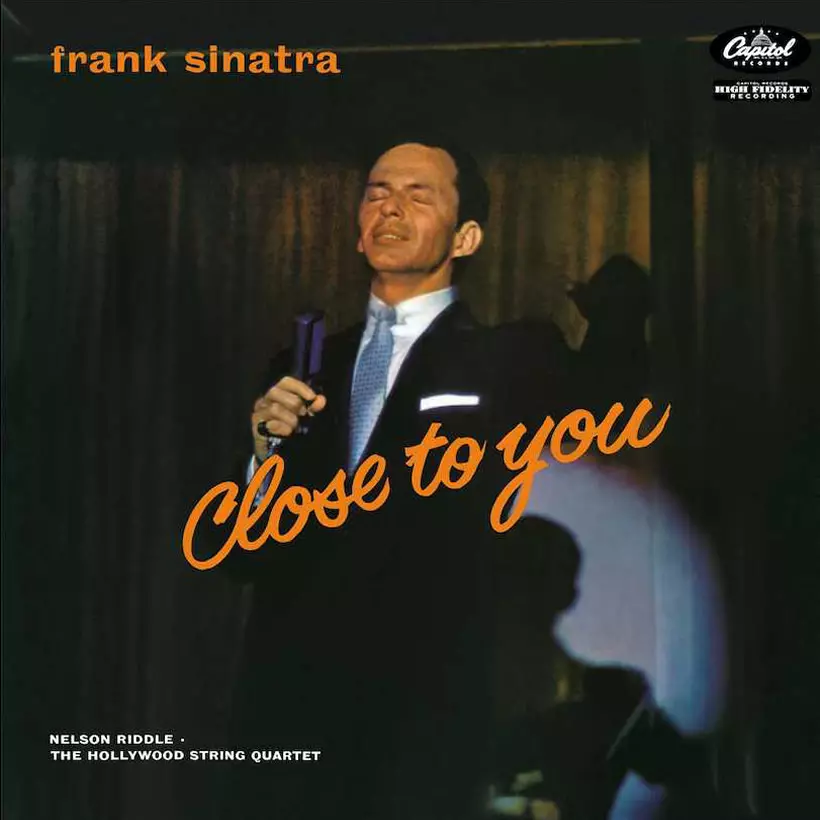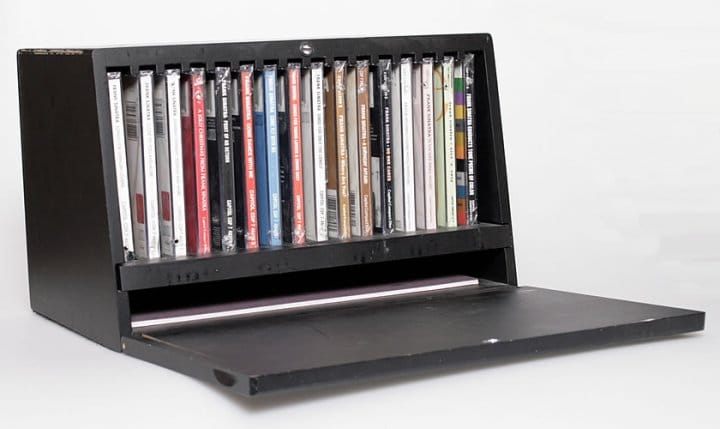CLOSE TO YOU

"You know, I think it would be a terrific idea to do an album with a string quartet." - Frank Sinatra
Frank Sinatra's vocal cords weren't the only elite instrument on display during Capitol Records' Close to You recording sessions at the Vine Street Studio in early 1956. Also present were Felix Slatkin's Guadagnini violin from circa 1730, Paul Shure's Guarnerius from circa 1691, Eleanor Slatkin's cello (also a Guarnerius from around the same year), and Alvin Dinkin's 1711 Albani viola.
It's really no surprise that only the finest instruments were chosen for this special album, given that its entire approach was inspired by great chamber composers such as Debussy, Ravel, and Villa-Lobos. Fittingly, the musicians assembled for the project were the mercurial Hollywood String Quartet, renowned for the 'luxuriant glow' of their recordings of Schubert, Schoenberg, Ravel, and Borodin.
"We were like a family for many years. Eleanor was a wonderful player-she had the most beautifully rich, warm sound and absolutely perfect intonation. Felix had a great sense of timing and a sense for phrasing a long phrase. In a quartet, all four people have to be of the same caliber, or it doesn't work ... you draw the sound by your ability: the kind of vibrato you use, the way you apply pressure to the bow ... these are all very subtle techniques in string playing." - Paul C. Shure
Sinatra himself developed a close friendship with Felix Slatkin (father of conductor Leonard) and his wife, Eleanor, who made up half of the quartet. Together, they discussed at length how an unofficial sequel to the iconic torch album In the Wee Small Hours could provide an opportunity to heighten the chamber quality of recording ballads with a more classical emphasis.
Having been friends with the Slatkins since his days recording at Columbia Records, Sinatra now had the artistic power and freedom to experiment more creatively with Capitol Records, where his comeback reinvention of the 1950s was well underway. Weekends spent playing classical records with the Slatkins led Sinatra to conceive the idea of recording an album with a string quartet.
Though lesser known than some of the more famous albums from that Capitol "golden era," Close to You may be the most perfect record of them all in terms of sheer artistry and musicianship. As a teenager becoming a Sinatra obsessive, I found it to be the album that was hardest to track down outside of old vinyl copies and an ultra-expensive complete Capitol CD box set called Concepts, which I’d often see locked inside a glass cabinet at Tower Records in Piccadilly Circus.

When a friend of mine stumbled upon a secondhand vinyl copy—knowing I had been searching for it—my instincts that it would be something special were instantly vindicated. Playing the title track, Close to You, with its exquisite "pleading" phrasing, I was sent into rapture.
"I received a gift of an old-fashioned windup Victrola from my aunt Dorothy. With it came a few recordings, among them a huge Victor Red Seal disc with 'Reflets dans L'eau' on one side and 'La Cathedrale Engloutie' on the other-two Debussy piano compositions performed by Jan Paderewski. I probably blunted a bushel of cactus needles exploiting the wonders of those two treasures." - Nelson Riddle
Of course, there was a fifth essential player overseeing the non-vocal music for the Close to You album—Sinatra's musical partner in crime, Nelson Riddle, who had already worked on half a dozen albums for Capitol with him. Riddle himself had loved the work of Debussy and Ravel since childhood, and this particular project offered him a rare opportunity to scale down his orchestrations—something he had seldom done before, having generally preferred large-scale string sections for his recorded studio work.
"It's the most stunning thing that Nelson Riddle ever did. Using the string sound as a basis rather than a pad or an enhancement really was a turnaround for Nelson. String quartet writing is the hardest thing to do, because everything is so open. With a larger orchestra, you have a big palette to work with, and there are all kinds of things going on. You can use at the orchestra to overcome melodic deficiencies by using riffs and doing things with the woodwinds or brass over a string pad and get away with it. When you're writing for four, six, or eight instruments, it's another story." - Paul Shure
Frank Sinatra's relationship with classical music and opera is rarely discussed, but he was deeply inspired by the great exponents of those forms, whether it was Caruso or Heifetz. Having already adopted bandleader and jazz clarinetist Tommy Dorsey's circular breathing technique for his own singing method early in his career, there is no doubt that the subtle shades and tones in Sinatra's unparalleled phrasing of the Great American Songbook were influenced by many of the great classical musicians he admired. You might even say he approached many of his famous torch songs—such as Angel Eyes and Guess I'll Hang My Tears Out to Dry—with the same level of psychological intensity as 18th and 19th-century German Lieder. Albums such as Where Are You?, No One Cares, and Only the Lonely exist almost on the Winterreise spectrum of despair, both musically and lyrically.
Though the album sold fewer copies than his previous Capitol projects, many—including myself—now consider it to be among the very best Sinatra ever recorded, with tracks such as Close to You, With Every Breath I Take, and I Couldn't Sleep a Wink Last Night achieving pure audio transcendence. In fact, I would go so far as to say it is one of the most perfect works of art from the 20th century, distilling the genius of Tin Pan Alley poets with an impressionist influence through Nelson Riddle, and executed to the highest degree by the Hollywood String Quartet and Sinatra himself.
The sheer quality of the recording is something else entirely. Even today, playing it feels as if Sinatra's ghost is inhabiting the space around me, the music filling the room with a warmth and presence as vivid as a living being. Hard to believe, then, that the album was recorded 68 years ago when the singer was 40 years old.
It truly feels like he's close to you.